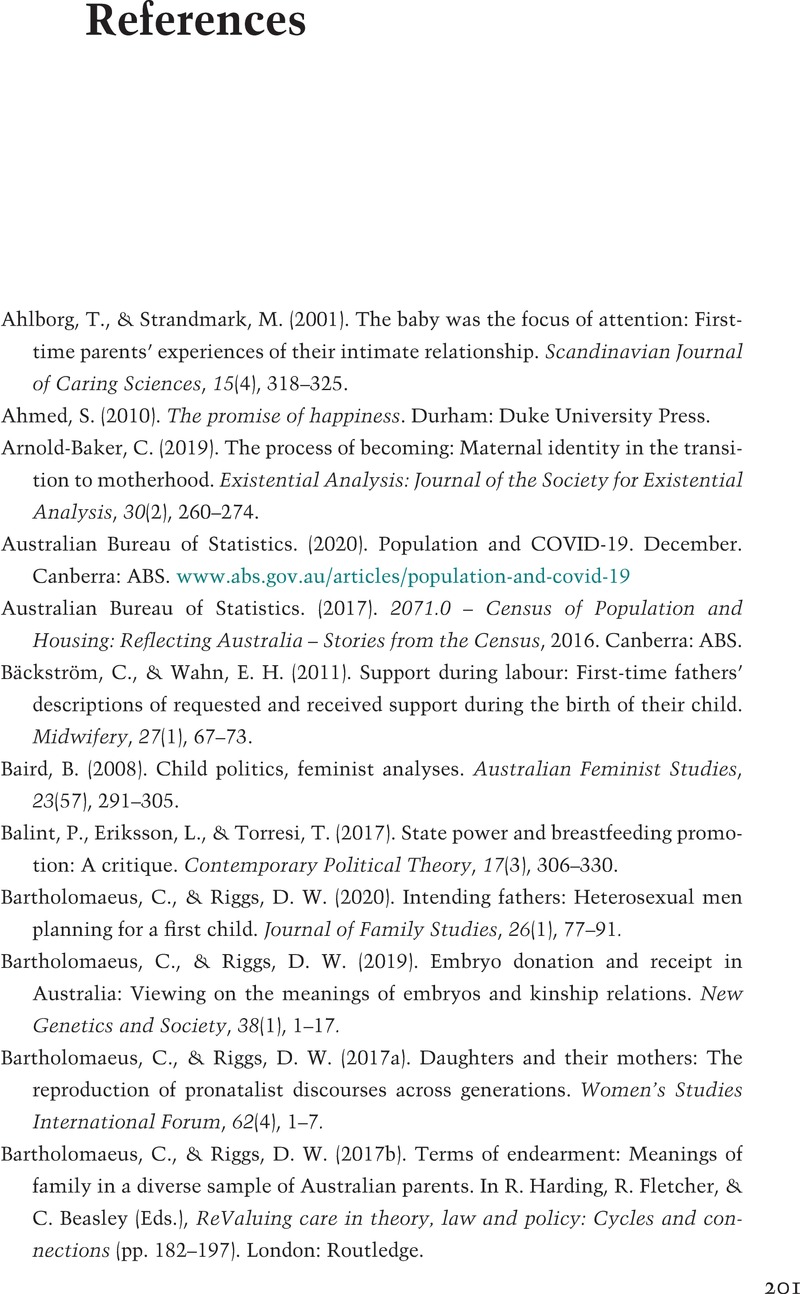Book contents
- First-Time Parenting Journeys
- First-Time Parenting Journeys
- Copyright page
- Dedication
- Contents
- Acknowledgements
- 1 Introduction
- 2 Undertaking a Qualitative Longitudinal Research Study with Intending Parents
- 3 Motherhood Moralities
- 4 Birthing Experiences
- 5 Emotion Work in the Transition to Motherhood
- 6 Development of a Parental Identity
- 7 Views about Having More Children
- 8 Changes in the Couple Relationship over Time
- 9 Grandparents Navigating Shifts in Relationships and Identity
- 10 Reflecting on the Study Findings and Experience
- References
- Index
- References
References
Published online by Cambridge University Press: 02 March 2023
- First-Time Parenting Journeys
- First-Time Parenting Journeys
- Copyright page
- Dedication
- Contents
- Acknowledgements
- 1 Introduction
- 2 Undertaking a Qualitative Longitudinal Research Study with Intending Parents
- 3 Motherhood Moralities
- 4 Birthing Experiences
- 5 Emotion Work in the Transition to Motherhood
- 6 Development of a Parental Identity
- 7 Views about Having More Children
- 8 Changes in the Couple Relationship over Time
- 9 Grandparents Navigating Shifts in Relationships and Identity
- 10 Reflecting on the Study Findings and Experience
- References
- Index
- References
Summary

- Type
- Chapter
- Information
- First-Time Parenting JourneysExpectations and Realities, pp. 201 - 213Publisher: Cambridge University PressPrint publication year: 2023

